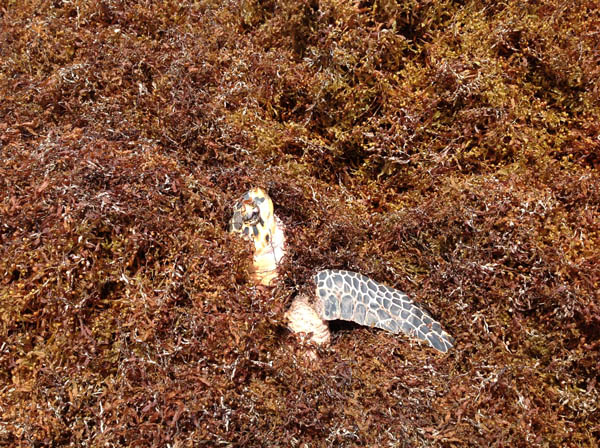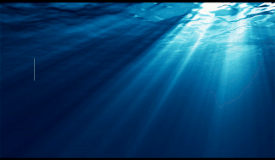 PHILIPSBURG:--- Since its initial warning of a renewed influx of Sargassum Seaweed in May 2014, the St. Maarten Nature Foundation is again warning of a significant influx of the invasive seaweed in the coming weeks: “We have been coordinating our monitoring efforts with our partners in the region and based on weather predictions and satellite images there is a significant amount of the seaweed headed in our general direction. This on top of the large volume of seaweed that we have already been experiencing,” commented Nature Foundation Manager Tadzio Bervoets. Especially the beaches of Guana Bay, Gibbes Bay and Dawn Beach and the area of Point Blanche are heavily impacted.
PHILIPSBURG:--- Since its initial warning of a renewed influx of Sargassum Seaweed in May 2014, the St. Maarten Nature Foundation is again warning of a significant influx of the invasive seaweed in the coming weeks: “We have been coordinating our monitoring efforts with our partners in the region and based on weather predictions and satellite images there is a significant amount of the seaweed headed in our general direction. This on top of the large volume of seaweed that we have already been experiencing,” commented Nature Foundation Manager Tadzio Bervoets. Especially the beaches of Guana Bay, Gibbes Bay and Dawn Beach and the area of Point Blanche are heavily impacted.
“We have been really trying to work both with our partners in the region and with local stakeholders to find a way to control the amount of the weed washing up on beaches but this has proved to be a very difficult task. The removal of the seaweed with heavy loaders causes serious risk to nesting sea turtles and hatchlings while the grass itself can be a hazard to the animals, as we received information of Sea Turtle Deaths caused by the grass from our colleagues in Barbados where the Seagrass has been suffocating turtles in large amounts. Economically speaking there is a serious effect that seagrass is having on the beaches of the island. As soon as the grass is cleared it is being deposited back on the beach by the wind and currents. We will continue to work towards research the effects of the grass and some possible solutions but at this point Sint Maarten, like many islands in the Caribbean, are being heavily impacted.
Sargassum is a genus of brown (class Phaeophyceae) seaweed which is distributed throughout the temperate and tropical oceans of the world. Most of the Sargassum Seaweed lies concentrated in the Sargassum Sea, a region in the middle of the North Atlantic Ocean surrounded by ocean currents. It is bounded on the west by the Gulf Stream; on the north, by the North Atlantic Current; on the east, by the Canary Current; and on the south, by the North Atlantic Equatorial Current.
Sargassum first plagued the Caribbean and St. Maarten in 2011 and 2012, with the Foundation having to warn swimmers to avoid swimming in Guana Bay in August and September due to the large amount of Sargassum Weed and many beach front residences and hotels having to continuously clean washed up Sargassum. The resulting large influx of Sargassum Weed has been due to a suspected southward shift in the Gulf Stream, which has pushed the Sargassum Sea– an area of the Atlantic Ocean where Sargassum Weed is in thick concentration, south to our area. This coupled with the seaweed flourishing due to warmer seawater temperatures has caused a huge amount of seaweed to enter the region. Scientists suspect that the invasion is a result of Climate Change.
The Foundation is urging the community to keep an eye out for wildlife, especially sea turtles, which may be experiencing difficulties due to the wed and to contact the Nature Foundation at 5444267 in case a distressed animal is observed. The Foundation is also urging the community to collect as much of the Sargassum weed as possible to use in their gardens as a fertilizer; “We are urging the community to collect, rinse and add the seaweed to compost to be used in our gardens. We recommend to not apply it to the soil directly but to first rinse the seaweed and add to your compost heap,” commented Bervoets.













